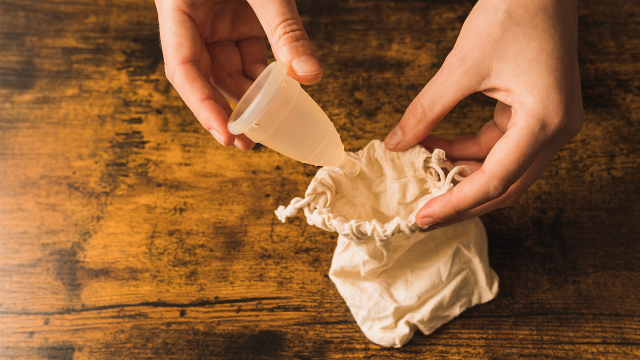My co-worker was the first person who recommended I try a menstrual cup. She told me that unlike tampons, you can safely leave menstrual cups in overnight.
This felt like a revolution. I hate the mess of pads and love the convenience of tampons so the cup seemed like the perfect solution. They’re great for the environment too.
After I bought my first cup a few years ago I began hearing conflicting information from my friends and on the internet about how long you should really leave them inserted for. Further to this, I found out that you can get toxic shock syndrome (TSS) from menstrual cups. The rare but very real risk of TSS has been drilled into me by tampon boxes and DOLLY Doctor tear-outs since my first period.
Now I have to worry about TSS with my cup too?
So how long should you really leave your menstrual cup inserted for? Is it safe to leave your cup in overnight? How likely are you to contract TSS from your menstrual cup?
How long should you leave a menstrual cup inserted for?
Even though they’re used for the same purpose, every cup will come with its own set of instructions and recommendations that the user should read very carefully. Every cup is a little bit different, so always read the instructions before use.
According to Therapeutic Goods Order 99, accessed via the Federal Register for Legislation, the information to be legally supplied with all menstrual cups sold in Australia must include a limit to the duration of use “not exceeding 8 hours”.
That means if you’re in Australia, the official government health recommendation is to keep your cup inserted for no longer than eight hours, no matter what the brand is.
Eight hours of use is a pretty good rule of thumb. It also means you can keep your menstrual cup inserted overnight, as long as you don’t keep it in for any longer than eight hours at a time. It’s probably best to set an alarm for eight hours after you head to bed just to be sure you don’t oversleep and forget to rinse your cup.
Also, just because you can use your cup for up to eight hours straight, doesn’t mean you necessarily have to. If you have a heavier flow, you’ll need to empty your cup more regularly anyway.
What about TSS?
It’s extremely rare but not impossible to contract TSS from using a cup, however TSS is not the only thing you need to look out for.
The reason we have to rinse our cups after a certain period of use is to ensure we don’t give any harmful bacteria a chance to grow. If bacteria in the vagina becomes unbalanced you can develop a yeast infection or other bacterial infections. That’s why it’s also really important to wash your hands thoroughly before and after inserting your cup.
Menstrual cups are safe and easy to use. They’re relatively mess-free and Aussies can feel safe using their menstrual cups for up to eight hours of consecutive use. You can read more about menstrual cups here.

Leave a Reply
You must be logged in to post a comment.